
Customer Satisfaction Index (Steel) (out of 100)
Lives reached through CSR initiatives
Critical suppliers assessed on Responsible Supply Chain Policy
SO1
SO3
SE
SO2
SO4
SE
SE
Tata Steel has been focussing on not only the existing but also the latent and evolving needs of our customers across the three customer groups, namely, B2B (Business Accounts), B2C (Individual Consumers) and B2ECA (Emerging Corporate Accounts) by offering differentiated products, services and solutions.
FY 2021-22 continued to be a challenging year due to COVID-19. During the period, maintaining constant touch with the customers, ensuring supplies and maintaining service levels were key in customer relationships. Numerous digital initiatives undertaken during the year helped enhance customer service and strengthen the special relationship that Tata Steel enjoys with customers. Tata Steel stood steadfast with its customers, partners, and other stakeholders and ensured that relationships with customers strengthened further.
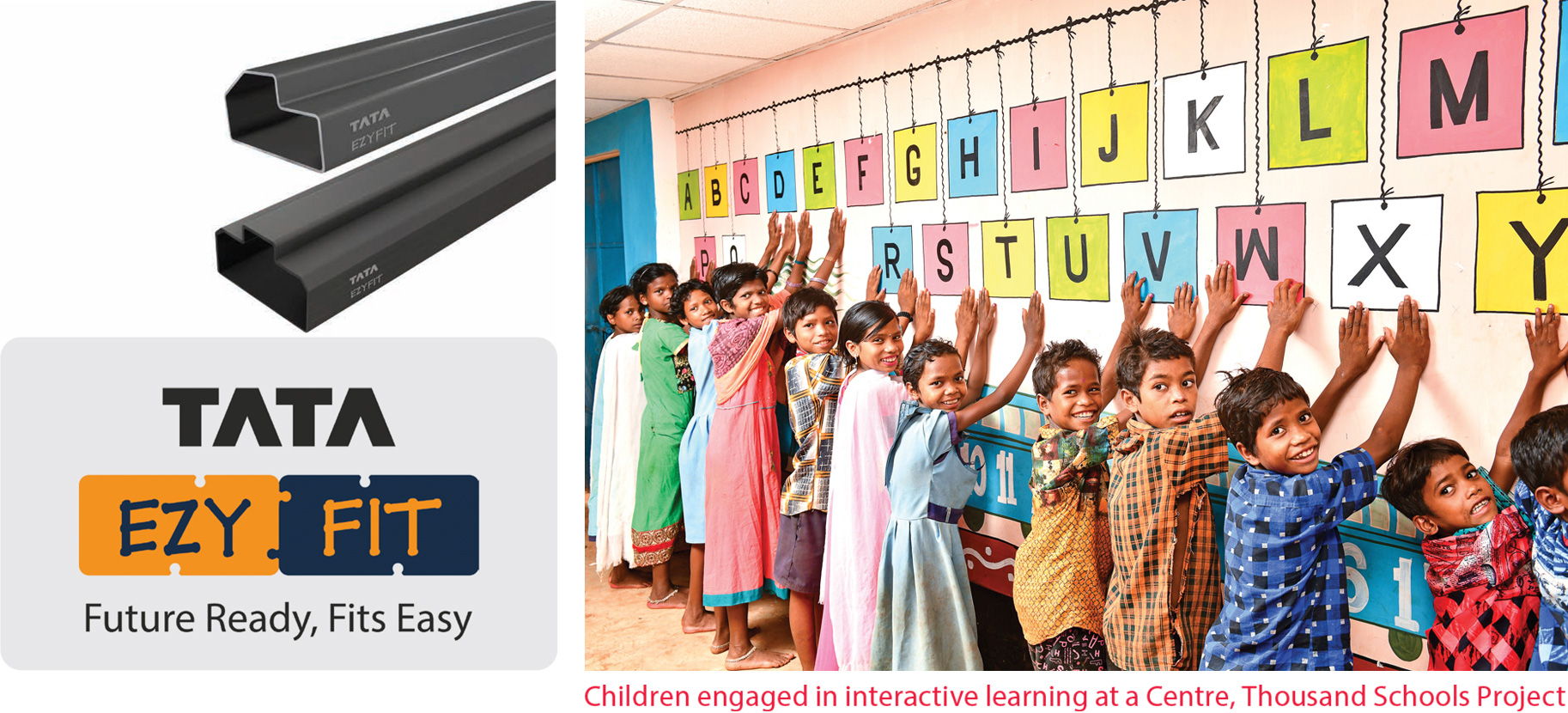
B2B – Business to Business, B2ECA – Business to Emerging Corporate Account, B2C – Business to Consumer
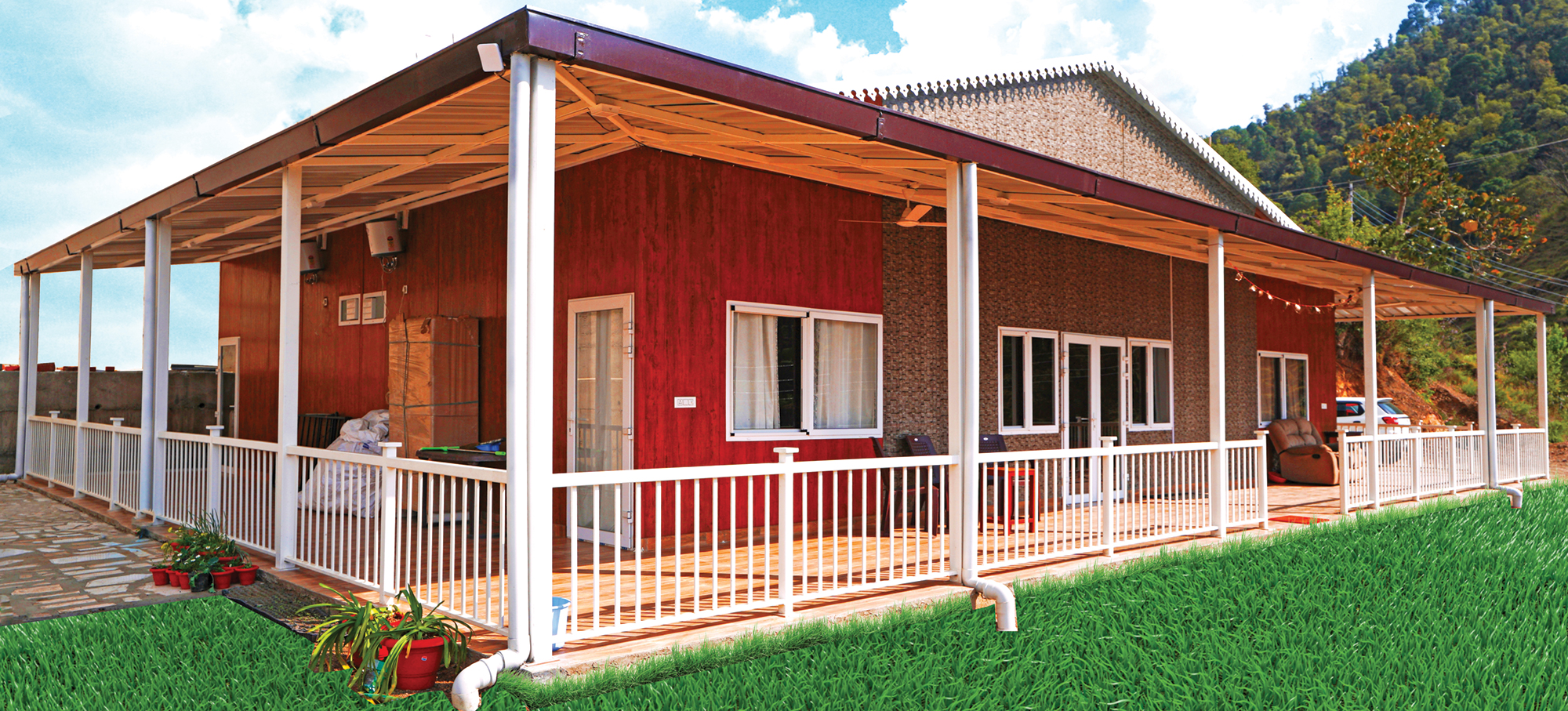
Nestudio - Prefab House & Structure Solution
FY 2021-22 was a year of extremes from demand perspective, but it also turned out favourably for the automotive segment. Over the year, we have strengthened our relationship through regular engagement with automotive manufacturers and their large value chain partners.
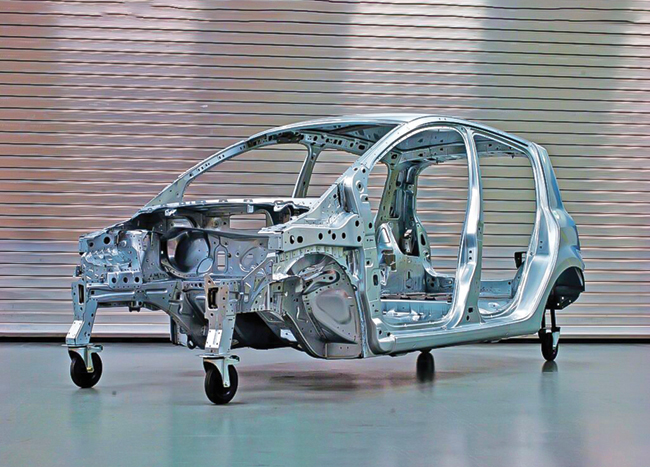
Developing future-ready automotive solutions
Tata Steel has collaborated with World Steel Association (through ConstructSteel forum) and Indian Steel Association in their efforts to increase steel intensity in construction in India. We are continuously striving to shape the construction industry by maintaining leadership position in specific segments such as marquee national projects, individual house builders (IHB), medium and small housing and construction, and rural roofing segments
Tata Steel has continued to increase its presence in engineering segments by enriching its product mix and entering new markets.
With multiple engagement initiatives, ECA brands continued to focus on value creation and building on customer relationships
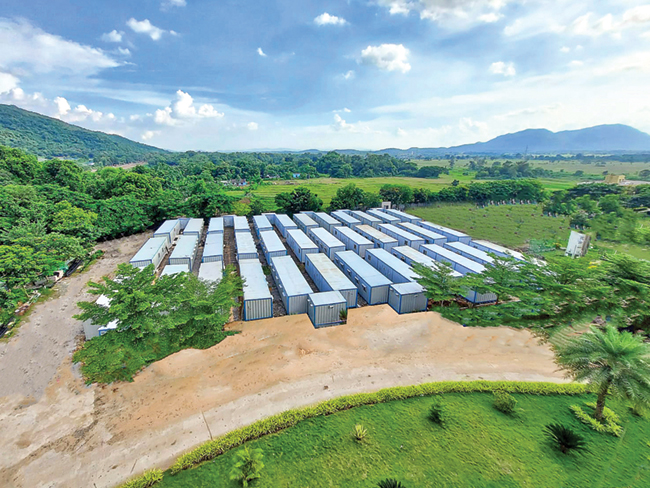
Tata Steel Medica Hospital, Odisha constructed using Nest-In MobiNest solution. The 156-bed 25,578 sq. ft. hospital was constructed as part of Tata Steel's COVID-19 response
Tata Steel has a long-integrated value chain that extends from mining to finished steel products with an interconnected network of suppliers, mines, ports, manufacturing locations, stockyards, processing facilities, channel partners and customers. We handle planning, sourcing, delivery and logistics of ~100 MnT materials which include raw materials, finished goods and by-products. Outbound logistics is about 60% dependent on railways and 40% on roadways at various locations. It consists of a network of warehouses and Steel Processing Centres (SPCs), ensuring timely delivery and transportation of finished products to customers. This is enabled by a network of hubs and stockyards at strategic locations across India to ensure low delivery cycles.
With increasing focus on reduction in ecological footprint and de-risking supply chain from emerging regulatory and other climate change risks, we are now focussing on a Green Supply Chain and exploring third-party logistics, modern state-of-the-art warehouses, use of energy-efficient and newer design eco-friendly ships, coastal shipping to reduce landside tonne miles and use of digital means to simplify the cargo flow of raw materials and other bought-out goods (maintenance, repair, operations, bulk, etc.) and services.

Responsible supply chain
Our supply chain partners comprise >6,000 suppliers, >200 distributors and >30 SPCs. We aim to build resilience in the supply chain through collaboration and long-term relationship building for product innovation, improved productivity, conservation of natural resources, resulting in improvement of ESG standards of the ecosystem.
In our materiality assessment in 2018, supply chain sustainability emerged as one of the key material issues for Tata Steel, which resulted in the formulation of a Tata Steel Responsible Supply Chain Policy (RSCP) in 2020. The Policy aims to encourage supply chain partners to share Tata Steel commitment on embedding sustainable business practices and has four principles on Environmental, Social and Governance (ESG) parameters, namely:
Our focus is to sensitise the supply chain partners, viz. suppliers, distributors and SPCs on the need for adhering to sustainable business practices and inculcate the same culture in their own supply chain. We have included introduction of RSCP in our ‘Swagat’ Program (a program conducted for newly registered vendors) and Vendor Meet. News feed on Tata Steel's e-Procurement platform has been sent for effective communication and awareness building on the policy.
We have identified ~450 critical suppliers (out of a supplier base of >6,000 suppliers) across all categories of Procurement, viz. Raw Materials, Process Consumables, MRO (Maintenance, Repair and Operations), Services and Transportation. These critical suppliers were identified based on a decision matrix broadly encompassing decision factors like spend value, criticality to business, actual/potential ESG risks in partner operations etc. We have initiated the sustainability assessment for our supply chain partners based on RSCP through an independent third party. In FY 2021-22, 258 suppliers were assessed. Additionally, 31 SPCs and 106 distributors, which are a part of our downstream value chain, have also been assessed on RSCP. Corrective actions have been identified and communicated for all supply chain partners to address their gaps. The overall governance, oversight and review of the RSCP deployment and assessment process are handled by apex councils led by the Senior Leadership Team.
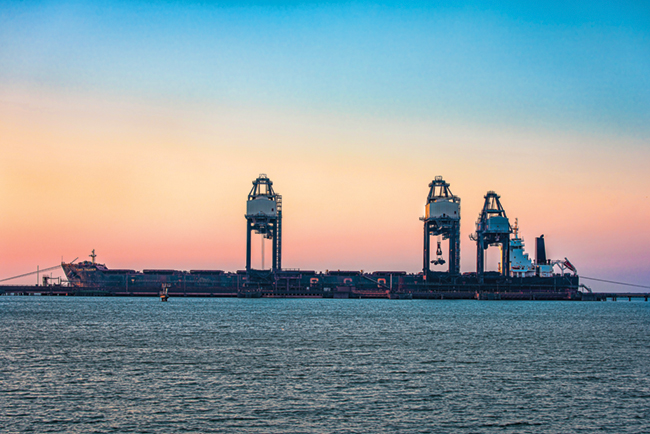
Port Talbot Harbour
The below mentioned charts depict our supplier geographical spread and procurement spend analysis for FY 2021-22
(India accounts for ~92% of our supplier base. The breakup provided is for the other 8%.)
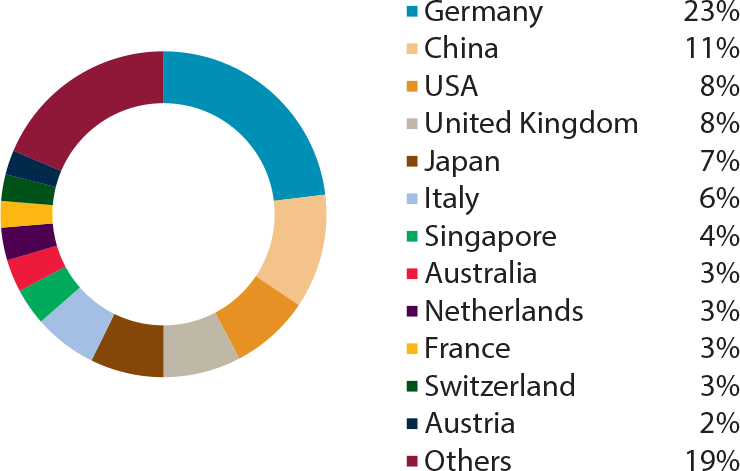

(India accounts for ~92% of our supplier base. The breakup provided is for the other 8%.)
Suppliers are based out of India
The SRM programme is aimed at building collaborations with strategic vendors for managing and enhancing value delivery through supplier-led innovation. During FY 2021-22, multiple technology sessions were conducted on new and emerging technologies and processes across various improvement areas such as quality, delivery, productivity, safety and sustainability with our strategic vendor partners, which helped in creating value for both Tata Steel and supplier partners and also creating a value pipeline for future.
The structured program of CEO to CEO connect, which started in FY 2020-21, has continued in FY 2021-22 and we have conducted 16 interactions with strategic partners and the ideas generated are being driven through the SRM programme and CCTs (Category Competence Teams).
Developing supplier partnerships through long-term projects in the imported coal value chain is critical for reducing the overall cost of production in the long term. Understanding strategic plans of key suppliers and creation of mutually beneficial products have helped maximise the supply of coal that has higher Value-in-Use (VIU) suitable to our plant requirements. We have ensured supply security by developing new relationships in Canada, US and Indonesia. We have also created alternative supply chain models for coking coal enabled by vendor-managed inventory at Indian ports. This has facilitated supply chain security, credit enhancement and optimisation of inventory, which have led to efficient management of complex multi-site operations.
In FY 2021-22, we have increased the efforts and focus on indigenisation and localisation across multiple categories of buy like raw material, spares, and process consumables to mitigate macroeconomic risks. Indigenisation for spend of `235 crore across different categories of MRO, Bulk and Raw Material was completed in FY 2021-22. Going forward, a detailed roadmap for indigenisation has been created for the next three years.
Vendor Development Programme and Vendor Capability Advancement Program (VCAP) primarily aim to partner and support suppliers to enhance their capability through combined identification of necessary initiatives and continuous improvement, thereby creating a competitive vendor base across Tata Steel. In FY 2021-22, we initiated 43 (cumulative) vendor development programmes, for improving vendor capability. In addition, the safety performance of suppliers has also improved as we intend to inculcate safety as a culture for our vendor partners. A total of 450 suppliers were covered by vendor capability and skill development training programmes. Over 12,000 contract workforce personnel were trained under the skill certification programme, resulting in 100% coverage.
To support local communities and encourage the inclusion of marginalised sections of the society, we help develop their entrepreneurial capabilities by creating positive differentiation through our Affirmative Action (AA) programme. Nearly 33% of our supply chain partners are locals, of which 71 are AA suppliers and displaced persons vendors (displaced due to greenfield project).
Tata Steel ensured that no pay cut was in practice by the local service providers and contract workforce was paid as per emoluments promised. Assistance was provided at every level to vendor partners supplying material to Tata Steel from across India by ensuring availability of vehicles, racks and issuing letters for seamless transportation.
Tata Steel is one of the few companies to measure end-to-end Scope 3 emissions in all modes of transportation, giving it an equal focus as Scope 1 and Scope 2 emissions. We have implemented many sustainability initiatives in the supply chain such as idle freight reduction resulting in reduction of CO2 emissions, increasing rail coefficient as against road movement, greener modes of transport like shift to coastal movements and have deployed energy efficient vessels to reduce the carbon footprint for imported raw materials.
Tata Steel became the first steel producing signatory and 24th organisation to join the Sea Cargo Charter to measure and reduce environmental impacts of global seaborne cargo. In addition, we have rebaselined and validated our CO2 footprint measurements as per the latest International Maritime Organization (IMO) guidelines. For this we tied up with ‘RightShip’, which is the world’s biggest third party maritime due diligence organisation providing expertise in global safety, sustainability and social responsibility practices. This process of reporting and validating has been standardised for seaborne emissions.
Tata Steel has deployed about 59 CNG/LNG based vehicles in last mile delivery to reduce its CO2 footprint. The Company flagged-off the first batch of liquefied natural gas (LNG) powered vehicles to transport its finished steel products at a function in Nagpur. As a first mover to deploy EVs in freight segment, Tata Steel has tied up with an Indian start-up and deployed four electric trailers for last mile delivery.

Completed maiden multi-modal shipment of TMT bars from West
Bengal to Assam via Indo-Bangladesh Protocol Route
Moving from land to water transport, Tata Steel’s TMT bars, weighing approximately 1,800 tonnes, were successfully shipped from Haldia Port in West Bengal to Pandu Port in Assam, using the Indo-Bangladesh Protocol (IBP) route via Brahmaputra River. This shipment of finished steel products arrived at Haldia on rail before being loaded on to river barges. The IBP route will also help the Company lower its Scope 3 carbon footprint. Tata Steel has signed a Memorandum of Understanding (MoU) with Mitsui OSK Lines (MOL), a global marine transport group, on August 6, 2021 to develop and deploy environment-friendly shipping solutions.
In ocean trade, Tata Steel has eliminated class E & F vessels (having higher specific CO2 emissions) and moved to energy efficient vessels (class A-D) including trial of alternate fuelled vessel. Tata Steel along with Tata NYK and NYK Line executed trial of deploying bio-fuel for imported shipments. Cargo movement via coastal and waterways is being ramped up to shift to greener modes of transportation. In addition, Tata Steel strives to improve operational efficiency in its supply chain operations such as travel distance and idle weight optimisation to further reduce its carbon footprint.
Rainwater harvesting system has been deployed at most of the SPCs and stockyards. Wooden pallets for packaging have been replaced with reusable steel pallets in all finished goods movement by railways and is further being extended to road movement.
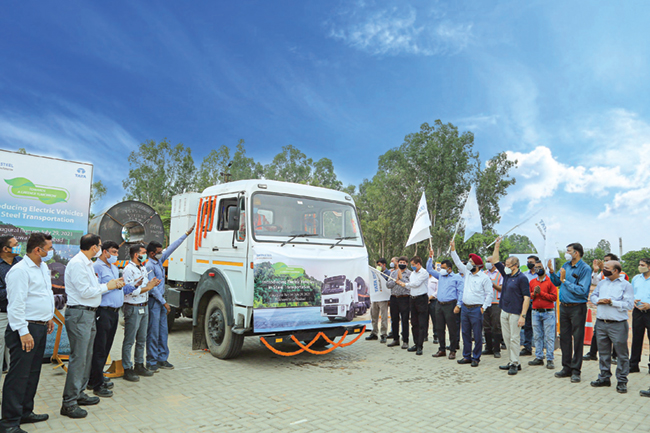
Pioneered the use of EVs for steel transportation
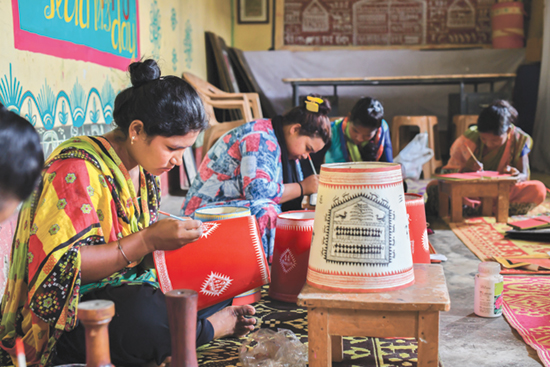
Women from Navjeevan Cooperative Limited in Kalinganagar, engaged in Saura Painting
For over a century, Tata Steel has been serving the marginalised and voiceless sections of the community across more than 4,500 villages in nine districts of Jharkhand and Odisha. Tata Steel’s overarching vision to be the global steel industry benchmark for value creation and corporate citizenship is underpinned by a resolve to “work with tribal and excluded communities we serve and co-create transformative, efficient and lasting solutions to their development challenges” and thereby create “an enlightened, equitable society in which every individual realises one's own potential with dignity”. Tata Steel’s CSR Programme aims to create deep-rooted social capital through leading societal impact in Eastern India with its own resources, extensive public and private collaborations as well as by fostering changemakers organically from within communities. The primary agency to plan and execute Tata Steel’s CSR is the Tata Steel Foundation, which has a diverse 800+ strong force of professionals from myriad domains who have strong relationships with communities by directly working amongst them to implement various social development programmes.
We have been standing by the most under-served communities in the country, throughout all three waves of the COVID-19 pandemic, creating solutions and platforms that facilitated information, met material gaps, supported livelihoods, and met critical healthcare infrastructural requirements. Our COVID-19 initiatives have impacted the lives Completed maiden multi-modal shipment of TMT bars from West Bengal to Assam via Indo-Bangladesh Protocol Route of ~3 million people across 24 states of India.
Meeting material, information and well-being deficits: 10,34,070 lives impacted
| Initiatives | Achievements |
|---|---|
| #DigitalBridges | 2,12,260 people received online counseling, protocol awareness, and isolation support through in-person and online outreach |
| #ThoughtforFood | 1,257 people who were COVID+ and home isolated received 2 warm meals daily for at least 5 days 64,000+ meals distributed |
| #Sanjeevani | 8,20,553 people received masks, PPEs, home isolation kits and RAT testing kits. The isolation and testing kits were distributed through the National Health Mission and respective district administrations in Jharkhand and Odisha; each ASHA worker in Kolhan received an oximeter |
Creating economic opportunities: 15,125 lives reached
| Initiatives | Achievements |
|---|---|
| #DigitalBridges |
A cumulative income of `2.30 crore has been enabled for people who faced loss of income due to COVID-19 #CashforWork covered;
|
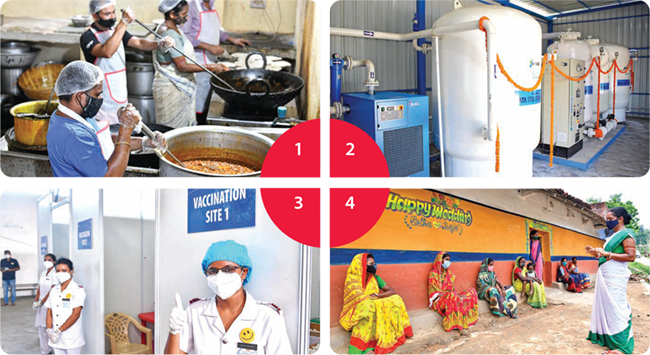
Through #CombatCovid19 initiatives in FY 2021-22
Establishing platforms to amplify impact: 7,67,546 lives impacted
| Initiatives | Achievements |
|---|---|
| #FarRishta | 3,03,752 lives reached through the efforts of our volunteers |
| #SabalSuraksha | 248 persons with disability provided customised assistance for vaccinations and healthcare |
| #ApnoKiSuno | 3,44,762 people registered for a vaccine through a collective partner-based platform created for this purpose |
| Community Vaccination | 1,18,784 1st doses, 1,15,006 2nd doses |
COVID related infrastructure
| Initiatives | Achievements |
|---|---|
| Oxygen generation plants (OGP) | 19 oxygen generation plants delivered in Odisha and Jharkhand to support both Tata Steel-owned and government district healthcare facilities treating COVID-19 |
| COVID care hospital/facility |
2,700 COVID care beds installed across Tata Steel-owned and managed hospitals across locations at peak capacity during first and second waves
Following additional medical infrastructure established in anticipation of third wave:
|
Tata Steel continued its community development programmes and CSR initiatives, despite restrictions due to the COVID-19 pandemic. The Maternal and Newborn Survival Initiative (MANSI) continued to fully support expecting mothers as well as new-born and infants and primary healthcare services reached to the needy. The Lockdown Learning Model devised during the pandemic to provide learning support to children continued and reached over one lakh children, leading to significant improvement in their learning outcomes. A Foundational Learning Programme was launched to support children at the beginning of their schooling journey to cope with learning losses. SMART classes were introduced to Masti Ki Pathshalas. Communities continued to be supported to earn their livelihoods including agricultural and allied activities, skill-based vocational training through our own institutions and other specialised sponsored courses for eligible youths and job placements as well as support to women Self Help Groups (SHGs). Persons with Disabilities (PwDs) were also supported through capability building, linkage to entitlements and platform for celebration. Work in ethnicity continued through the Samvaad Ecosystem through work on tribal languages, art and culture, sports, traditional healing systems, cuisines, music, action-based cultural conservation research as well as a vibrant platform for conversations and celebration of their heritage by tribal communities from across India. Communities at large also continued to be supported through basic infrastructure, water conservation and household-level nutritional gardens.
Signature Programmes: Actualising national change models which address core development gaps in India, while being replicable in the global context
Over 0.50 million lives have been reached through our Signature programmes in FY 2021-22.
| Initiatives | Impact |
|---|---|
| A society where the health and survival of women and children before, during, and after childbirth is a priority |
|
| Universalisation of secondary education for all children through a revitalised public education system |
Over 3,02,682 children’s lives impacted through Education Signature Programme (ESP)
|
| Empowered tribal communities with voice and agency to lead their development agenda, residing in an ecosystem that recognises and appreciates tribal values and living |
Samvaad Ecosystem reached 64,864 people through (a) bringing together tribes of India and beyond for constructive dialogue, (b) enabling key elements of tribal identity to thrive, be celebrated and feed into the dialogue and (c) fostering a youth peer group who drive positive change
|
| A vibrant JamshedpurKalinganagar corridor where local communities participate in and lead a significant enhancement in their social, natural and cultural capital |
|

E-scooters to support mobility of Sahiyyas in Kolhan region of Jharkhand
PCD Programmes build regional change models which enable lasting betterment in the well-being of communities, prioritising those who are excluded and proximate.
Over 0.55 million lives have been reached through our PCD programmes in FY 2021-22. This is apart from what is achieved under #CombatCOVID19 initiative.
| Initiatives | Impact |
|---|---|
| Ensuring increase in aggregate annual income for marginalised and excluded households |
|
| Community institution driven integrated water ecosystem ensuring adequate surface water storage and ground water recharge |
|
| Ensure improvement in nutrition levels of households through consumption of nutrients sourced from Nutrition Garden |
|
| All PwDs become self-reliant to the greatest extent and the surrounding ecosystem supports and respects them |
|
| Initiatives | Impact |
|---|---|
| Jamshedpur to be free of the worst forms of child labour |
|
| Ensure the facilitation of all children across all villages to complete their schooling till grade 10 and receive guidance for future study or a vocation |
|
| Enabling identified women with leadership potential to have an effective voice in community decision-making processes |
|
| Ensuring basic health parameters of population proximate to Tata Steel operations; catered through provision of primary healthcare services as well as enhancing healthcare awareness |
|
| Ensure identification, development and facilitation of serious sporting talent in the fields of athletics, hockey, football and archery amongst youth across all villages |
|
| Infrastructure is established to enable access of communities to improved standard of living |
|
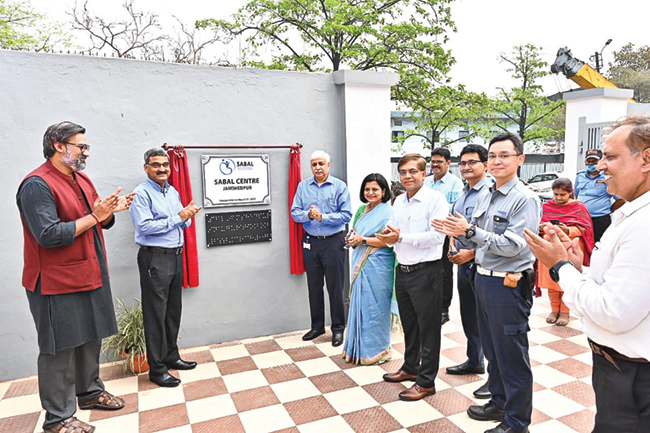
Inauguration of Sabal Centre at Jamshedpur
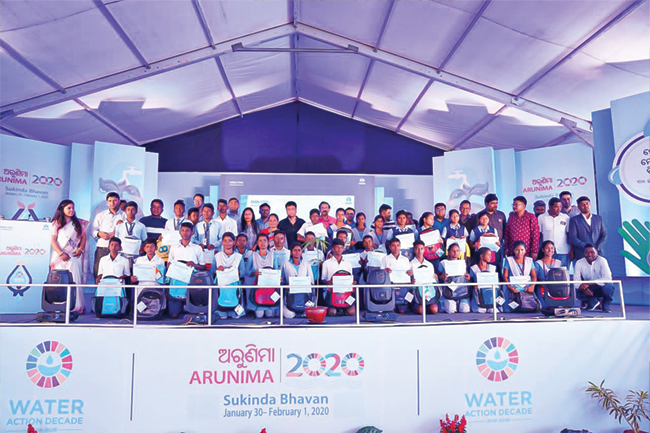
Jyoti Fellowship to support education of meritorious tribal and Dalit students
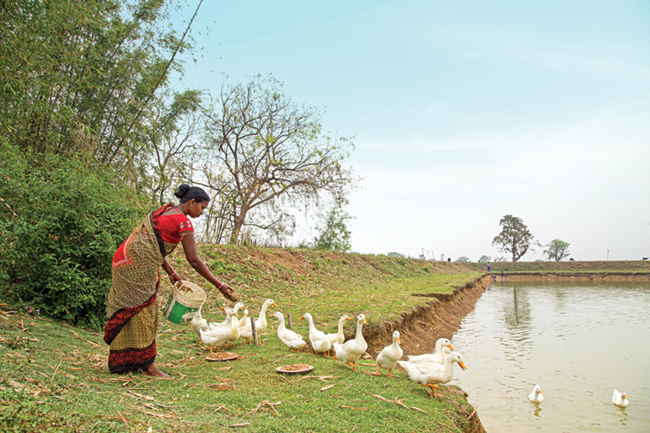
Ponds created for groundwater recharge and providing additional income to farmers
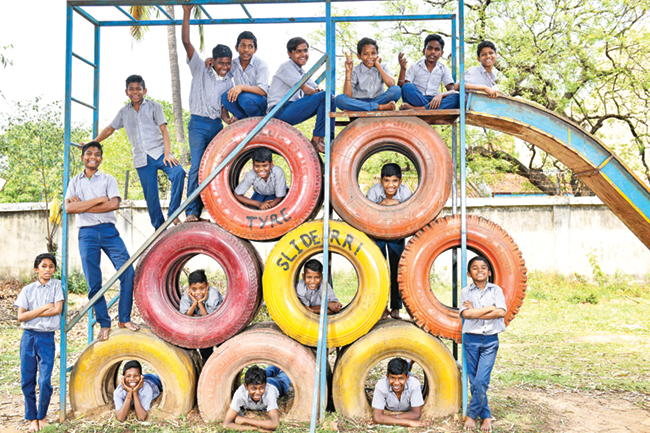
Masti Ki Paathshala initiative - a residential bridge course (RBC) for all-round development of street children and child labourers
CSR beneficiaries of non-COVID initiatives
| Initiatives | Impact |
|---|---|
| Ensuring community interests are considered in business strategy through (a) Employee volunteering leveraged to address social issues in our community (b) a unique and immersive experience of life in rural India for a broad crosssection of employees to see community perspectives and empathise with their issues and (c) meaningful engagement of our business ecosystem’s key upstream and downstream partner organisations and their employees to enhance effectiveness of their community development initiatives |
Volunteering initiative went digital in the form of #FarRishta programme during the pandemic, which then continued in a phygital model, combining physical and digital model mode, with the following outcomes:
|